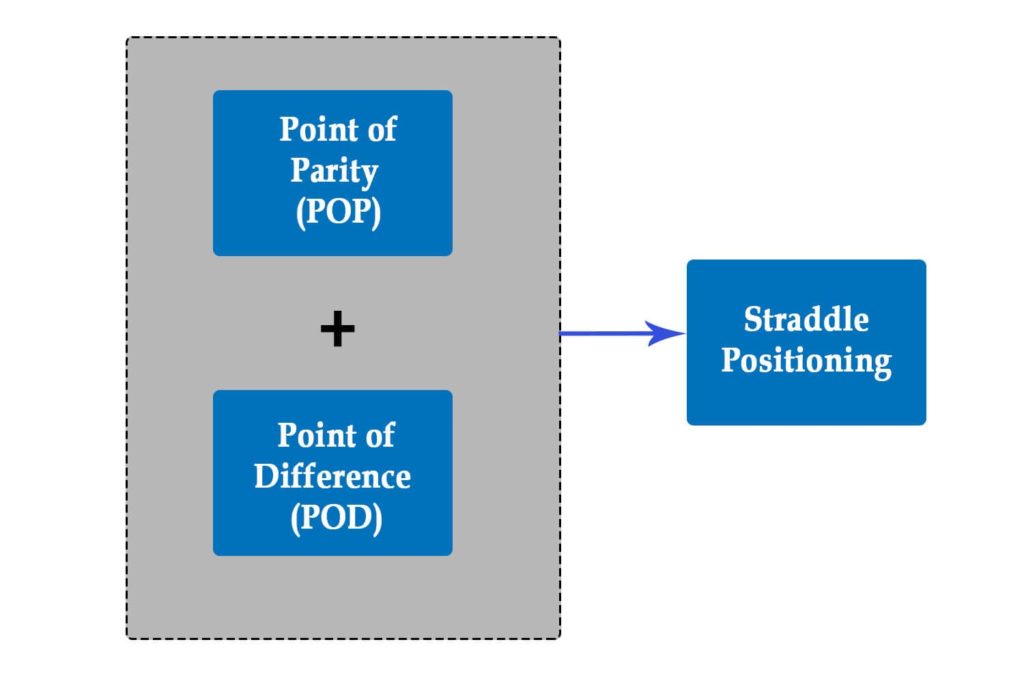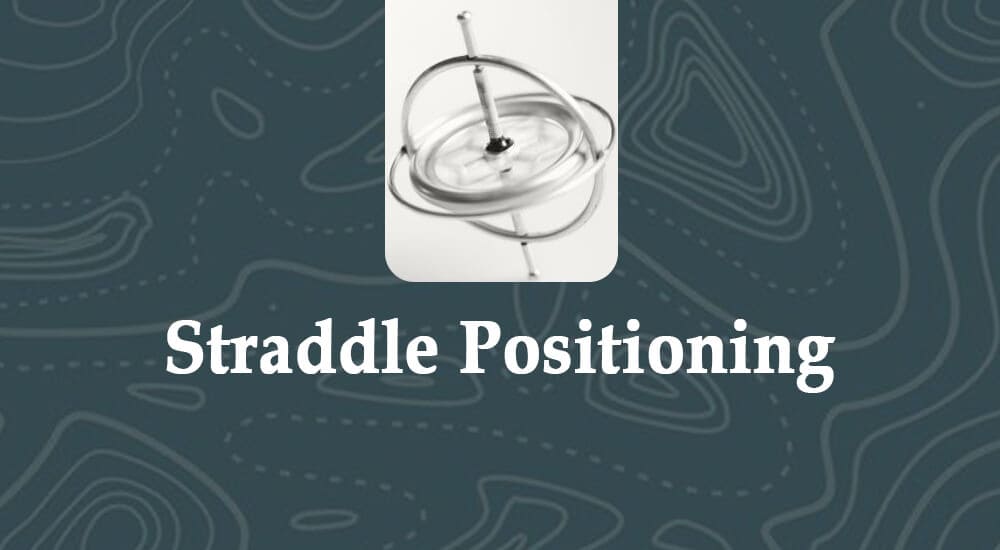Definition: Straddle positioning is a strategy where a brand tries to position its product in two categories simultaneously.
This helps create a dual product image to serve a larger audience.
Brands use a mix of Point of Parity (POP) and Point of Difference (POD) to find segments and position their product.
POPs are points of differentiation that a competitor has over your product. You must show that your offering is better or equivalent to the competitor to diminish their advantage and refocus on your point of parity.
For example, it’s thought that Apple products are superior to Samsung’s. So, Samsung tries to show that their products are as good as their competitors, such as battery duration, screen resolution, and design aesthetics.
POD is the key differentiator distinguishing a brand’s product from its competitors.
For example, Samsung can show that their phones have no notch, faster charging time, and are foldable.
Example of Straddle Position
The most famous example of a straddle position comes from BMW.
When BMW entered the market, all major automakers focused on luxury. BMW positioned itself as a luxury brand but with high performance, and it was a success.
Luxury was their POP, and the performance was POD.

The Risk with Straddle Positioning
The straddle position is a risky strategy where a brand tries to market a product in two niches and satisfies no frame. Losses can be enormous. Straddle positioning requires a lot of commitment and unique marketing tactics.
Summary
Straddle positions bring excellent results if the product fulfills requirements and brands can market it successfully. However, since it is positioning two segments, a brand must be careful about the POP and POD.
